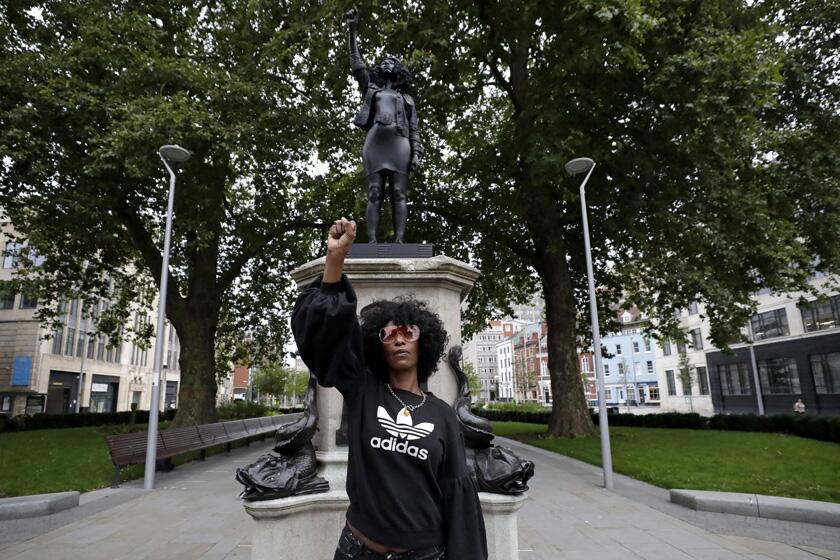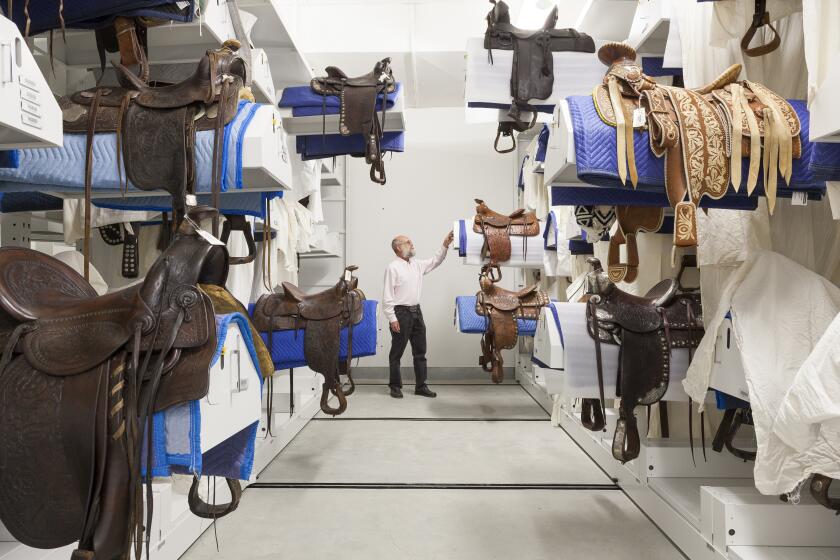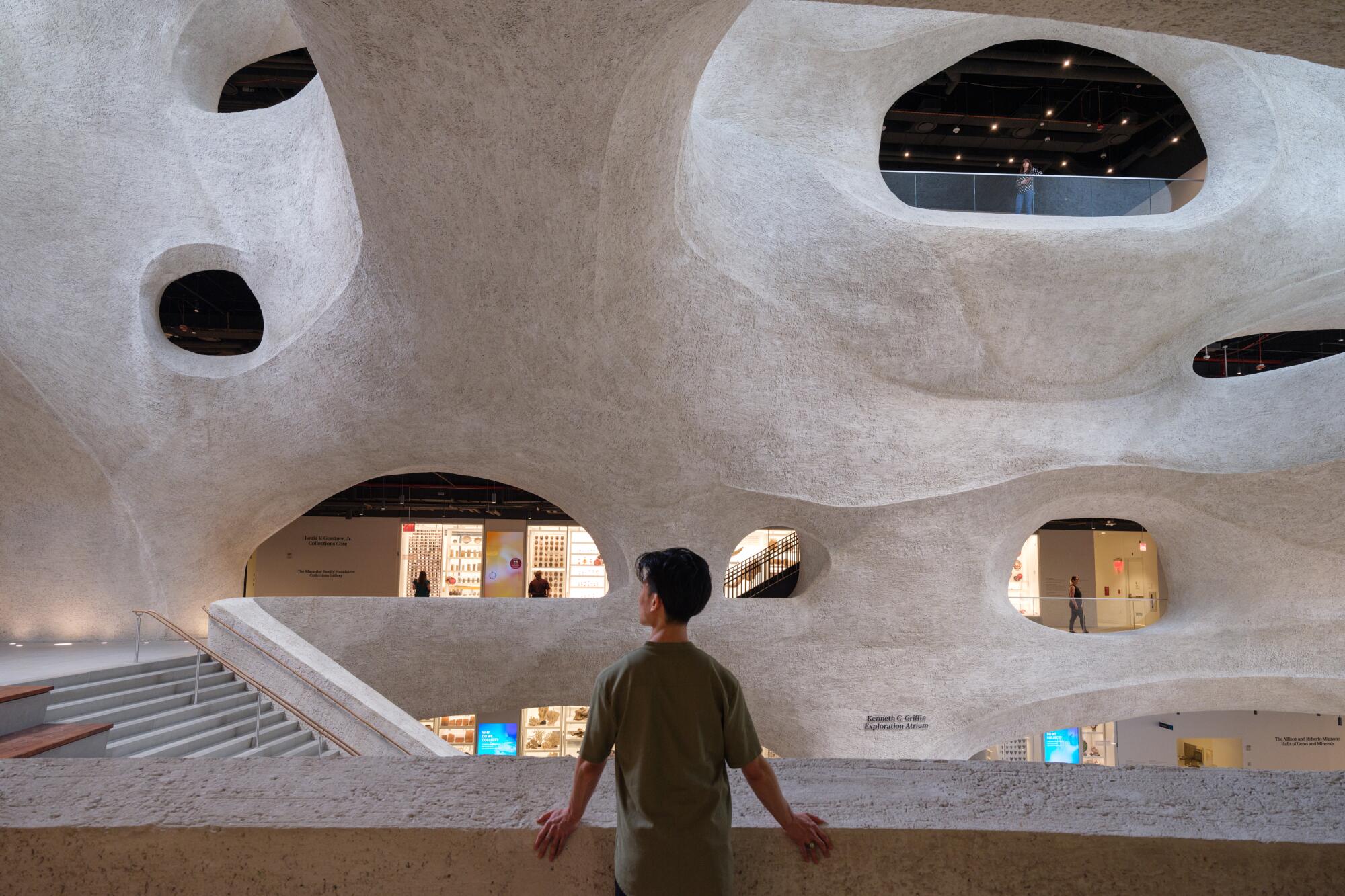
- Share via
New York — The American Museum of Natural History in New York City has a new wing, but to call it a wing seems imprecise. It is more like a strange, Paleolithic formation that emerges from the museum’s western flank.
That’s because the Richard Gilder Center for Science, Education, and Innovation, as the 230,000-square-foot structure is formally known, is inspired by the weathered forms of slot canyons. The heart of the building is its atrium, which consists of a series of undulating walls that taper into narrow skylights five stories above the ground. The rock-like interiors are fabricated via shotcrete, the method used to construct the curving concrete forms of skateparks and swimming pools; the tones are the variegated colors of sand. The vibe reminds me of the 19th century Spanish cave dwellings where Pedro Almodovar filmed “Pain and Glory.”
This is a fluid space, more of ancient earth than of the glossy world of contemporary architecture — which is not to say it isn’t revolutionary. Designed by Studio Gang, the Chicago-based firm led by Jeanne Gang, with New York-based Davis Brody Bond serving as executive architects, the Gilder Center has been a focus of architecture’s chattering classes since it opened in May. I too am intrigued by its forms, but I’m more interested in how the design marks the evolution of the institution.
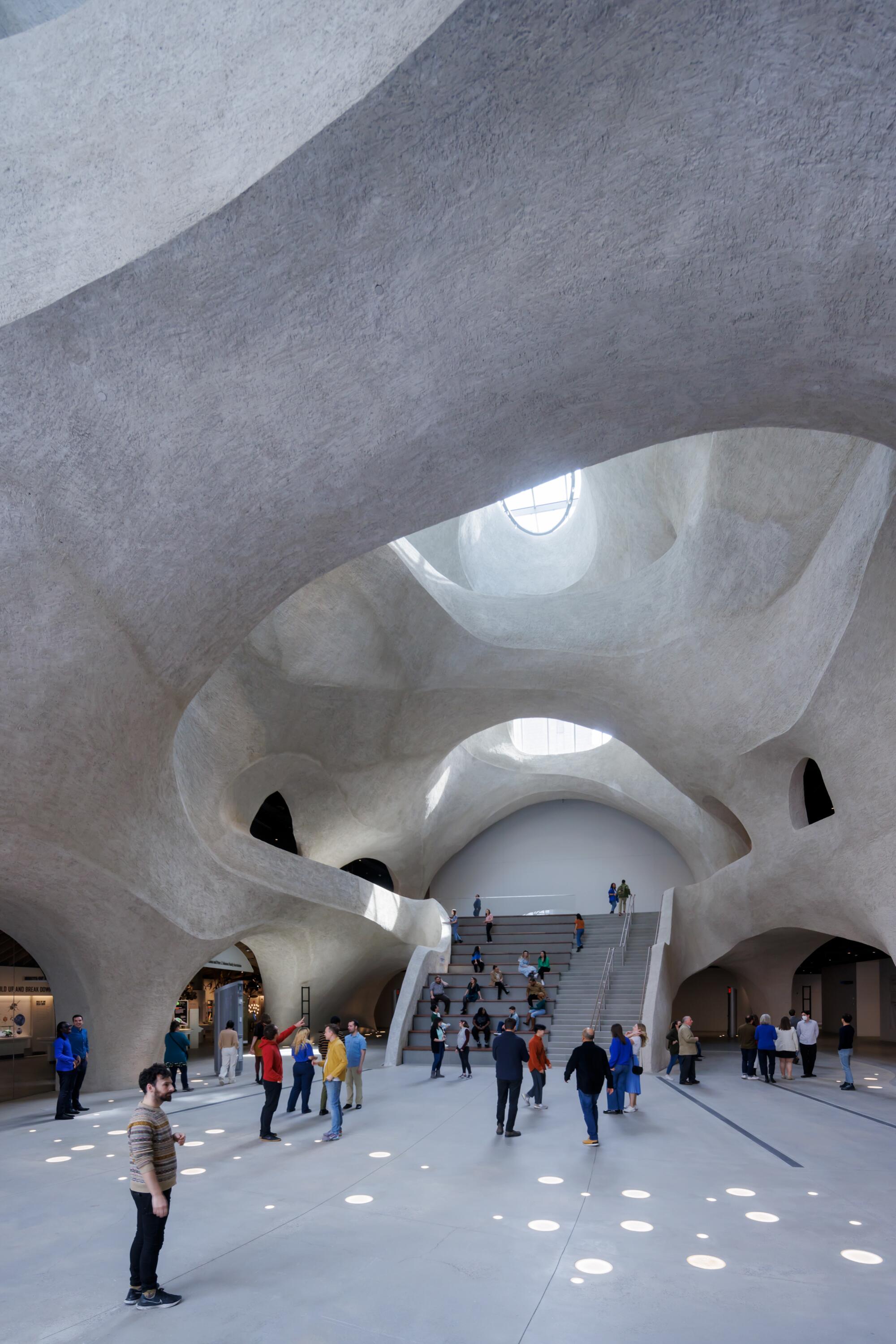
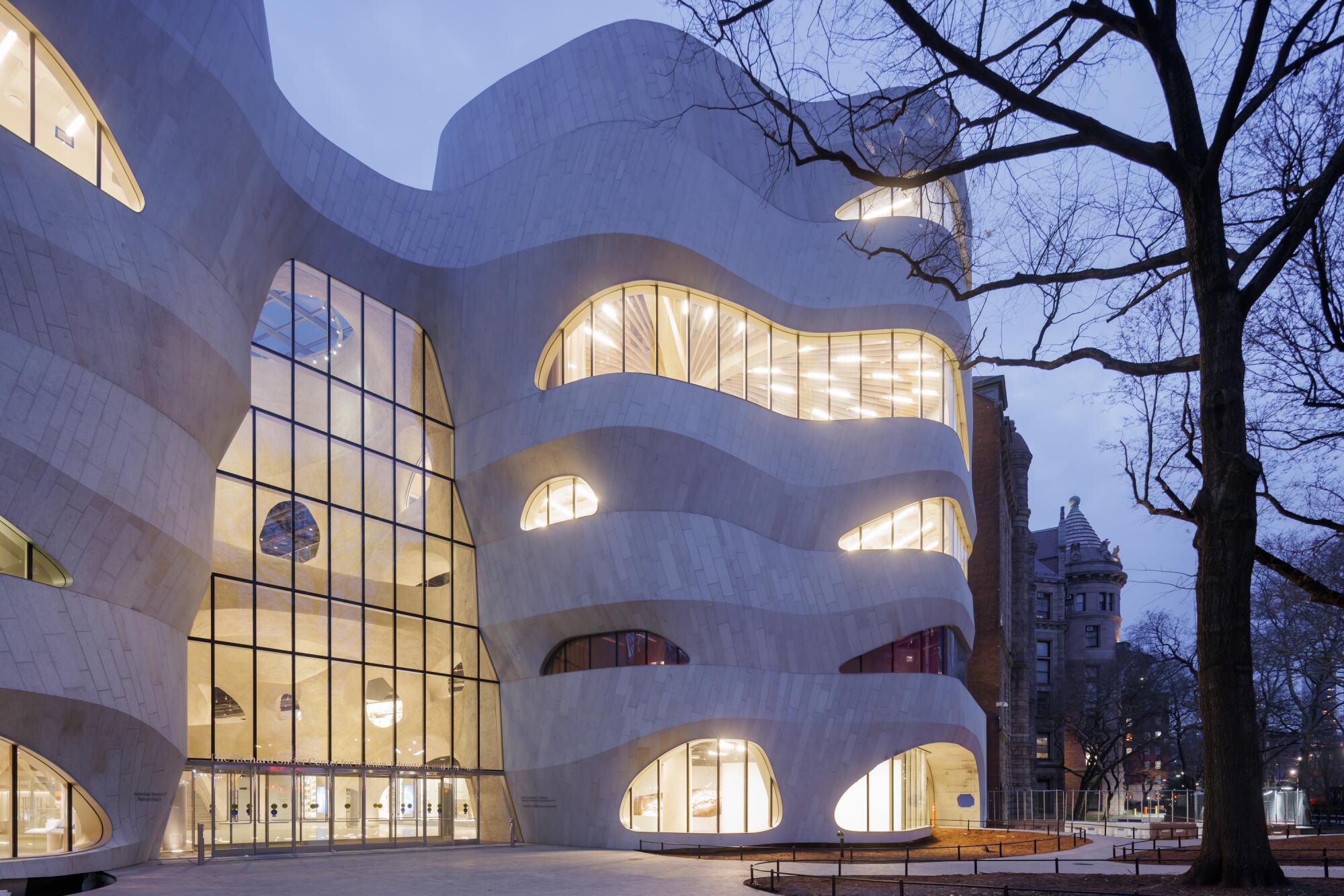
Natural history museums may be beloved for their dino bones and sparkling gems, but they come freighted with histories that are — to put it mildly — awkward.
When the American Museum of Natural History (AMNH) first opened to the public in 1871 — in temporary digs in an old arsenal in Central Park — one of the main attractions was a diorama that showed a lion attacking a wide-eyed Arab riding a camel. Now in the collection of the Carnegie Museum of Natural History in Pittsburgh, it was crafted, in part, from human remains. And it is one of many such objects at the center of a debate about the ethics of such installations and how or whether these 19th century exoticizations, often rife with inaccuracies, can be adequately reframed for the present.
These legacies extend beyond kitschy displays. Natural history museums have historically presented non-white cultures as primitive and static; collections were built quite literally out of colonial exploits and, at times, for scientifically specious reasons. Earlier this month, the Washington Post published a ghastly report about a brain collection at the Smithsonian National Museum of Natural History in Washington that was amassed by an early 20th century eugenicist to support his racist theories. In 1921, casts of some of those brains were put on display at New York’s AMNH as part of a congress on eugenics; a century after hosting the event, the museum issued a formal apology.
Ishi’s Brain In Search of America’s Last “Wild” Indian Orin Starn W.W. Norton: 352 pp., $25.95 * Ishi in Three Centuries Edited by Karl Kroeber and Clifton Kroeber University of Nebraska Press: 416 pp., $49.95
Running a natural history museum in the 21st century means continuously reckoning with the past.
In the short term, the AMNH has recontextualized some of its exhibits with texts correcting, for example, errors of fact in a diorama about a 17th century encounter between Dutch settlers and the Lenape people. And last year, after much public outcry, the museum removed a prominent monument to Theodore Roosevelt that showed the former president on horseback flanked by a pair of subservient Black and Indigenous figures.
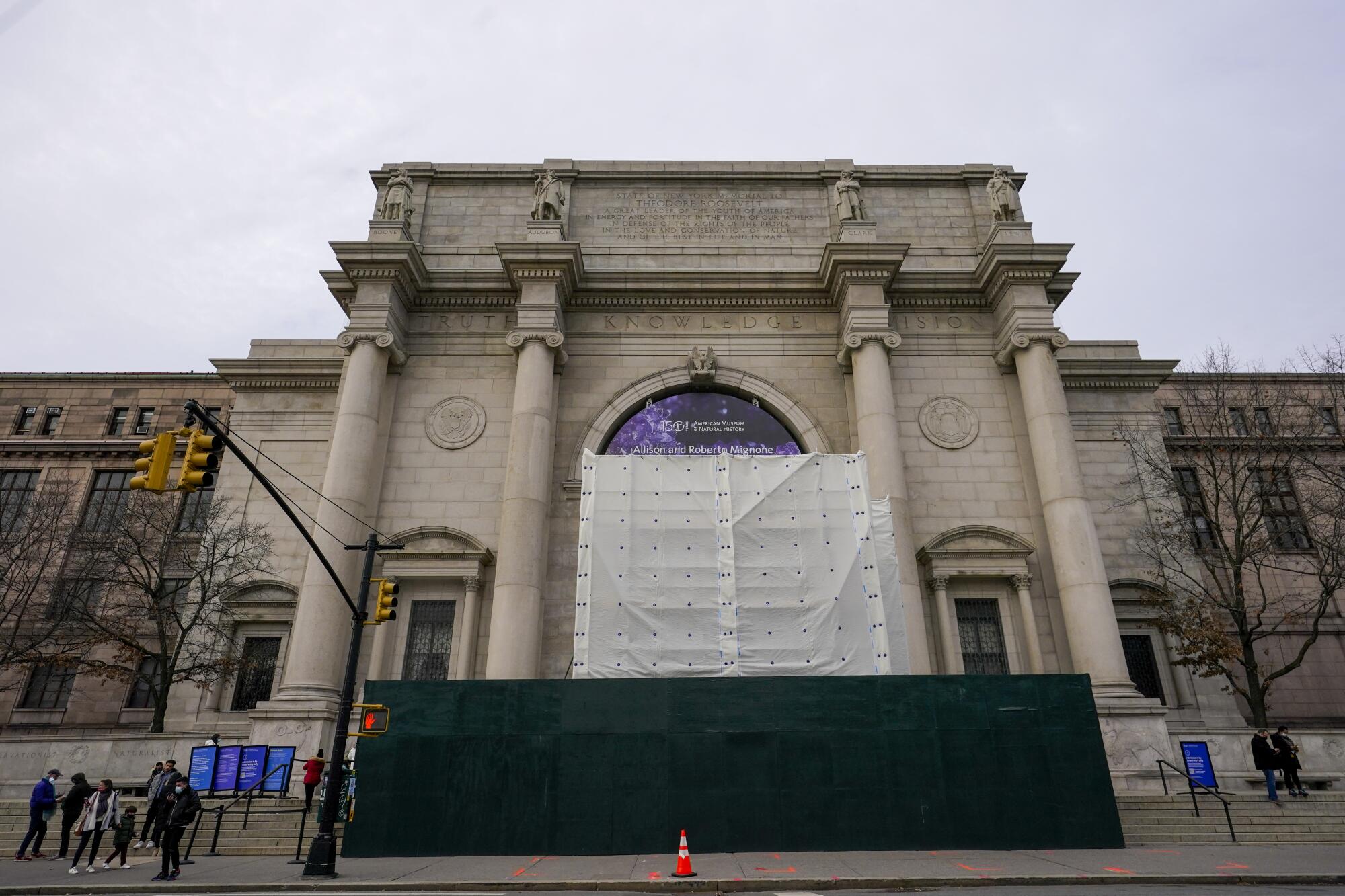
Over the long haul, the museum has also been rethinking its anthropological galleries.
Hierarchies are an implicit part of the natural history museum experience, where you’ll find halls devoted to cultures from Africa, Asia and the Americas but no hall of European culture. The omission “speaks to the era when Western thinkers saw Europeans as exceptional, as modern and civilized in ways that other races weren’t,” writes science journalist Angela Saini in Undark. “According to this worldview, White Europeans didn’t belong to nature; instead, they were destined to control it.”
Shouldn’t public monuments have public input? In the George Floyd moment, artists and designers are changing the nature of monuments and the histories they honor.
The AMNH has chipped away at that.
Last year, the museum unveiled a top-to-bottom redo of a hall devoted to the Indigenous cultures of the Pacific Northwest. The elegant installation design was conceived by WHY, a Los Angeles-based architectural firm led by Kulapat Yantrasast, in close collaboration with the museum’s North American ethnology curator, Peter Whiteley, and independent scholar Haa’yuups, a Nuu-chah-nulth cultural historian of the Huupa’chesat-h First Nation on Vancouver Island, Canada. A team of independent Indigenous curators and scholars, representing more than half a dozen cultures around the Northwest, was also involved.
The Northwest Coast Hall has a more nuanced history than similar displays of the era. First opened in 1899 in the oldest building within the AMNH complex (a five-story Victorian Gothic structure from 1877), the exhibitions were organized by famed anthropologist Franz Boas, whose theory of cultural relativism challenged the notion that some cultures were more “advanced” than others.

The Autry Museum of the American West’s new $32-million Resources Center takes a big step toward healing relations with Native tribes.
Boas was more enlightened than most of his peers. But as scholars Susan Harding and Emily Martin wrote in Anthropology Now in 2016, his work “also claimed the authority of science, of Euro-American knowledge-making practices, over local knowledge practices.” It was ultimately “Boas who divided, named and interpreted the Northwest Coast cultural materials.” Moreover, his narratives elided colonization and devalued objects of great spiritual importance.
“I still believe that that material belongs to us and it will never be given its true value in any other setting than our own Houses,” Haa’yuups told the New York Times upon the unveiling of the re-installation. The redo goes a long way toward telling a very different story. For one, cheesy dioramas are out. In their stead are beautifully illuminated artifacts with more complete explanatory texts that acknowledge the impact of phenomena such as colonialism and climate change and bring Indigenous life into the present. Rotating display areas showcase contemporary objects and ideas from the region.
The renovation and expansion project, called the NHM Commons, is set to debut in 2024. Both physically and conceptually, it’s meant to better connect the museum to the community.
“The Northwest Coast Hall has given us a model to really think of how we apply a model to other cultural hall spaces in the museum,” AMNH president Sean Decatur told me via telephone last month, “in terms of a collaborative approach with curators outside the museum who are connected to part of the cultures being represented.”
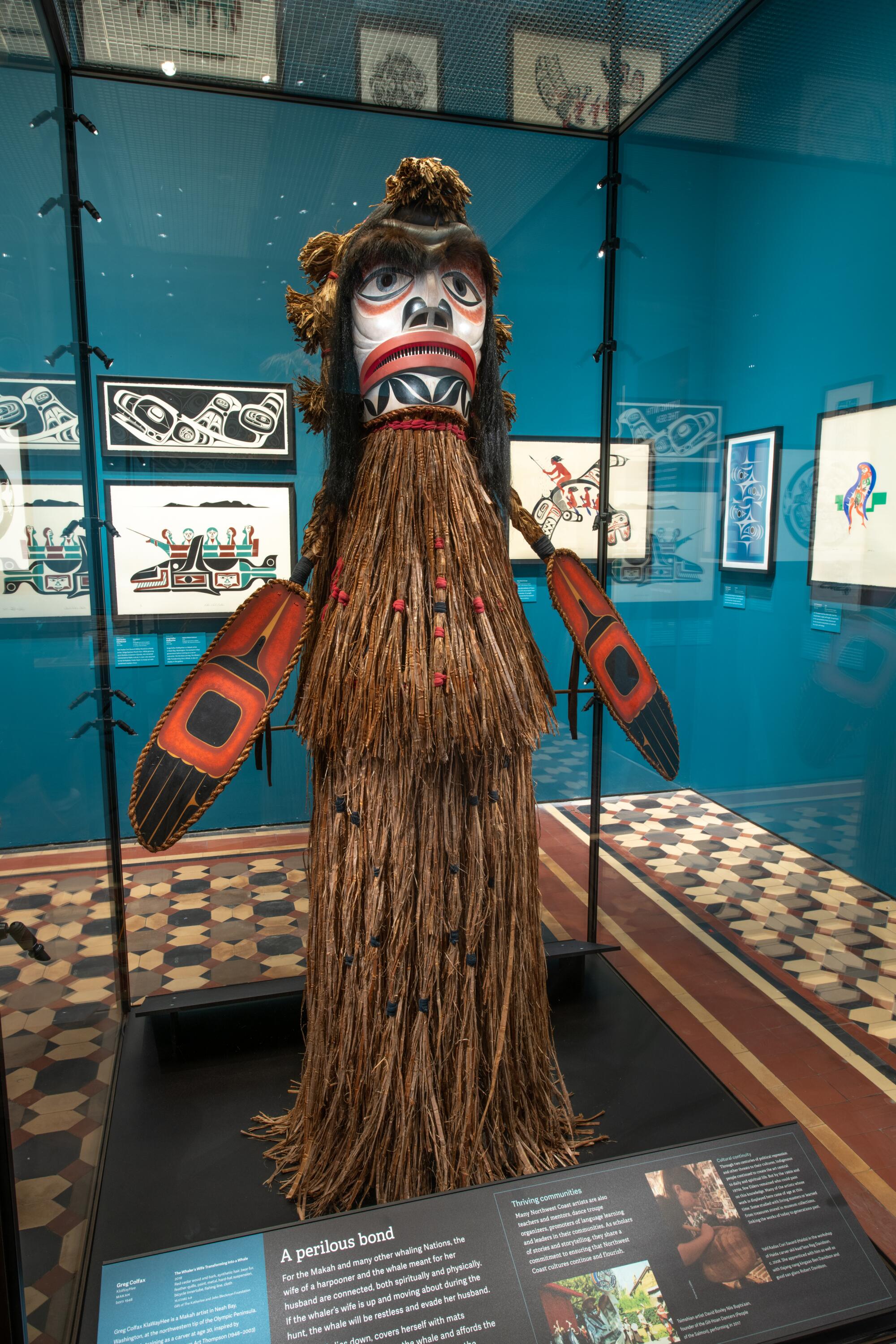
Within the broader historical context, the Gilder Center’s cave-like forms also mark an architectural reset.
A descendant of the European cabinets of curiosities of the 16th and 17th century, natural history museums emerged in the 19th century, frequently housed in buildings that reflected the European institutional styles of the era. In addition to the original Victorian Gothic structure by Calvert Vaux and J. Wrey Mould, the AMNH complex is also made up of Romanesque and Neoclassical buildings.
Natural history museums in London, Chicago and San Francisco adhere to similar styles — as does the original 1913 building for the Natural History Museum of Los Angeles County, designed by Frank Hudson and William A.O. Munsell. That Beaux-Arts structure features Romanesque and Spanish Renaissance flourishes. (It is also getting an expansion, courtesy of architects Frederick Fisher and Partners.)
Studio Gang’s design does away with these regimented architectural languages.
In the Gilder Center, the story of nature — and within that, humans — is framed not by the aesthetics of a single culture but by the forms of nature itself. There is no grand lobby with barrel vault ceiling; instead, the viewer is greeted by the sloping walls and gentle asymmetries of a rough-hewn cave, our most archaic form of shelter.
This is not out of character for Gang, an architect who frequently turns to natural forms in her work. Her Aqua Tower in Chicago, completed in 2010, looks like a residential high-rise embedded in a block of eroded ice. That same year, she and her team completed work on a pond and boardwalk adjacent to a Chicago zoo that has since become a wildlife oasis. The on-site pavilion they designed for the space was inspired by the shape of native milkweed pods.
Gang’s Gilder Center evokes wonder more readily in some places than others.
The facade of the building is not quite as awe-inspiring as the interior, looking more like a human ribcage than a natural rock formation. But the atrium, whose sculpted walls arch over a stepped seating area and a large open lobby area, is pure theatricality — in a good way. On the days that I visited, museum-goers of all ages lingered in the space to take photos or simply to hang out. (It’s bound to get a good workout as a gala location.)
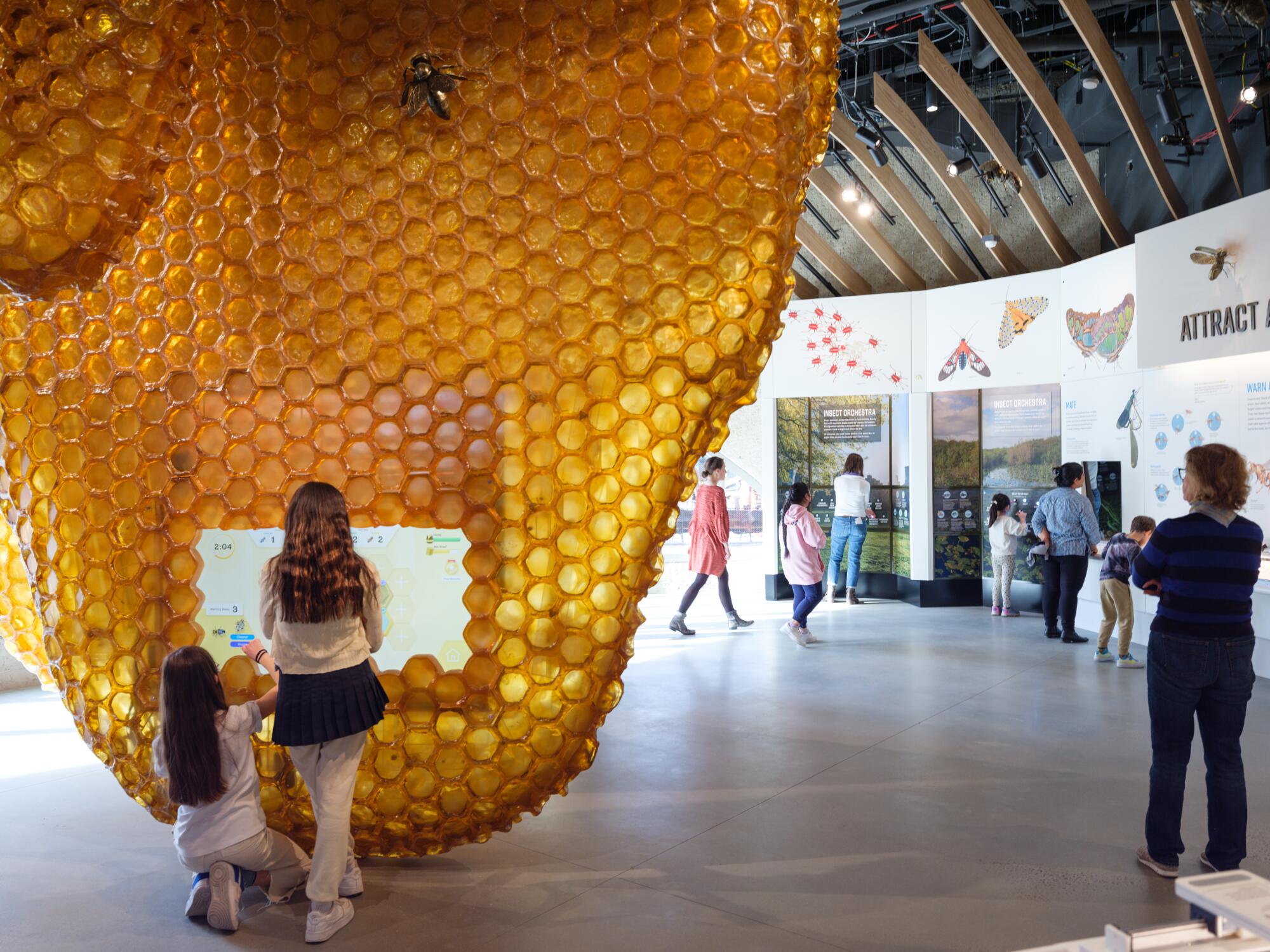
Tucked into vaulted openings around the perimeter on each floor are exhibition areas devoted to myriad subjects: fossils, Chaco pottery, New York rocks and Mao-era housewares from China. An insectarium with a monumental resin model of a beehive also has a display of live leafcutter ants at work; inside a nearby butterfly vivarium, you can watch pupae in various stages of metamorphosis. (The smart exhibition design is by Ralph Applebaum Associates.)
In this new wing, stories of nature commingle with narratives of human and cultural development. No dioramas. No hierarchies.
History, however, does not go unacknowledged. A fourth floor reading room with terrific views of Theodore Roosevelt Park features cases cluttered with books, prints and a model of a dinosaur — a nod to the more-is-more aesthetics of the cabinets of curiosities of old. Even in this space, however, human knowledge is contained within nature: A central pillar and the ceiling are rendered in the form of a tree.
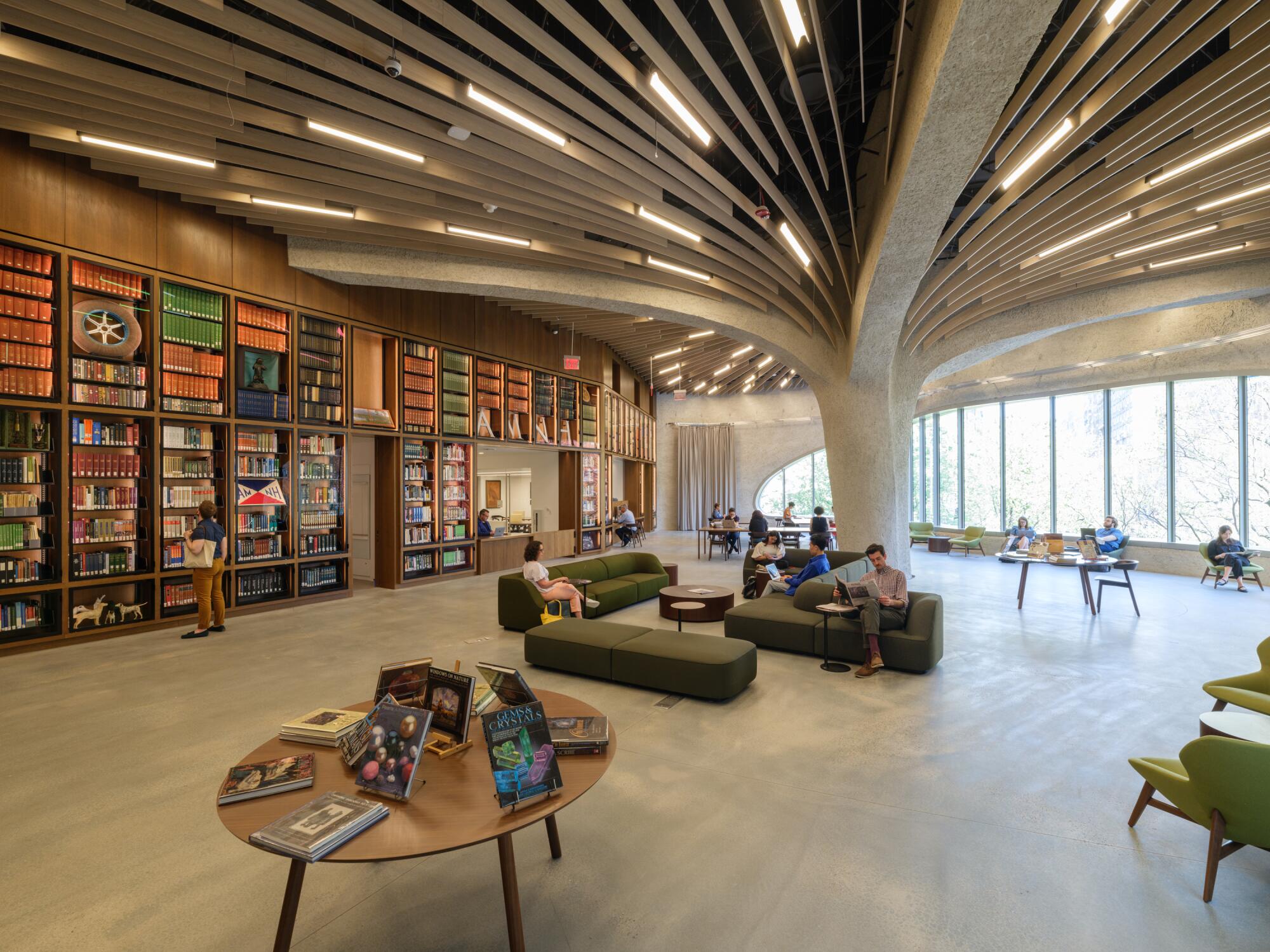
In addition to adding gallery space, the Gilder Center serves a practical purpose: providing 33 points of access to the rest of the AMNH, a byzantine four-block compound that has been added to piecemeal over a century and a half, resulting in awkward circulation patterns and many dead ends.
I spent one of my visits to the museum exploring how the new wing connects to the older parts of AMNH, trying to get a sense of how new stories connect with the old. Some of the transitions are seamless: Near the ticketing area, a niche cut into the cave-wall features a 19-foot installation of clear crystals, hinting at the treasures that lay inside the gleaming Hall of Gems and Minerals.
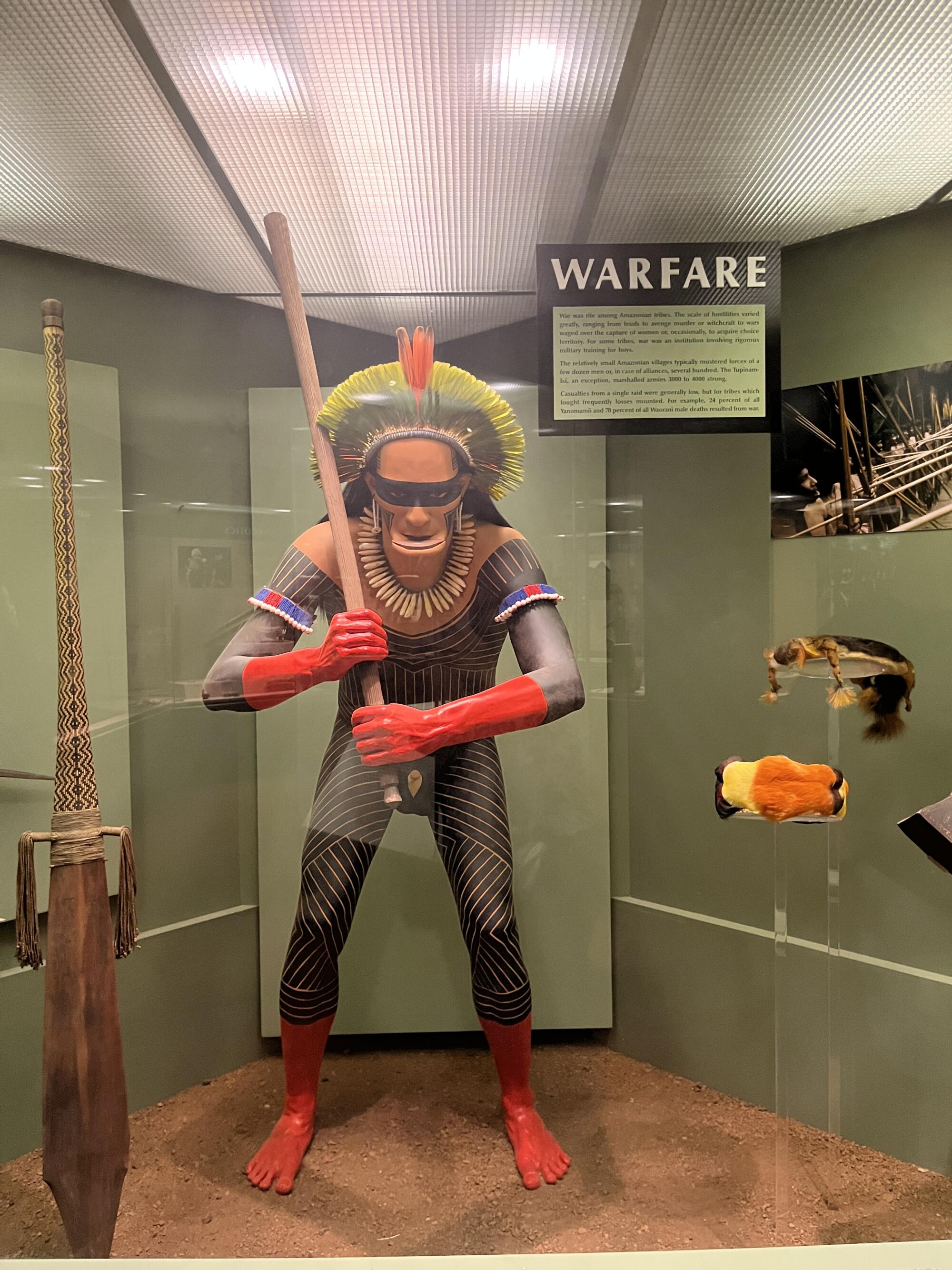
Others proved more awkward — long, blank hallways, really, that lead from one space into another. At one ground level transition, the cozy, arched nooks of the Gilder give way to a utilitarian check-in area for the Rose Center for Earth and Space; functional if not terribly inspiring.
And, on the second floor, I followed a passage from the Gilder into the Hall of South American Peoples, where I soon found myself in antiquated diorama-land, face to face with an Amazonian warrior in face paint under an all-caps text titled “WARFARE” (a display which, as a South American, I wouldn’t have minded so much if there was an equivalent diorama featuring Henry Kissinger). The Gilder may represent a fresh point of view, but it can’t undo all that came before.
Even so, after wandering these older spaces, returning to the new wing felt like an embrace.
In the New York Review of Architecture, critic Michael Nicholas noted, “The messiness of the museum as a whole is perhaps the most accurate symbol of our constantly evolving ideas about the world, more contentious and rifer with conflict than any individual moment could suggest.”
The Gilder is a moment — within the current context, a good one: people rendered small by the magnitude of nature. As it should be.
More to Read
The biggest entertainment stories
Get our big stories about Hollywood, film, television, music, arts, culture and more right in your inbox as soon as they publish.
You may occasionally receive promotional content from the Los Angeles Times.
